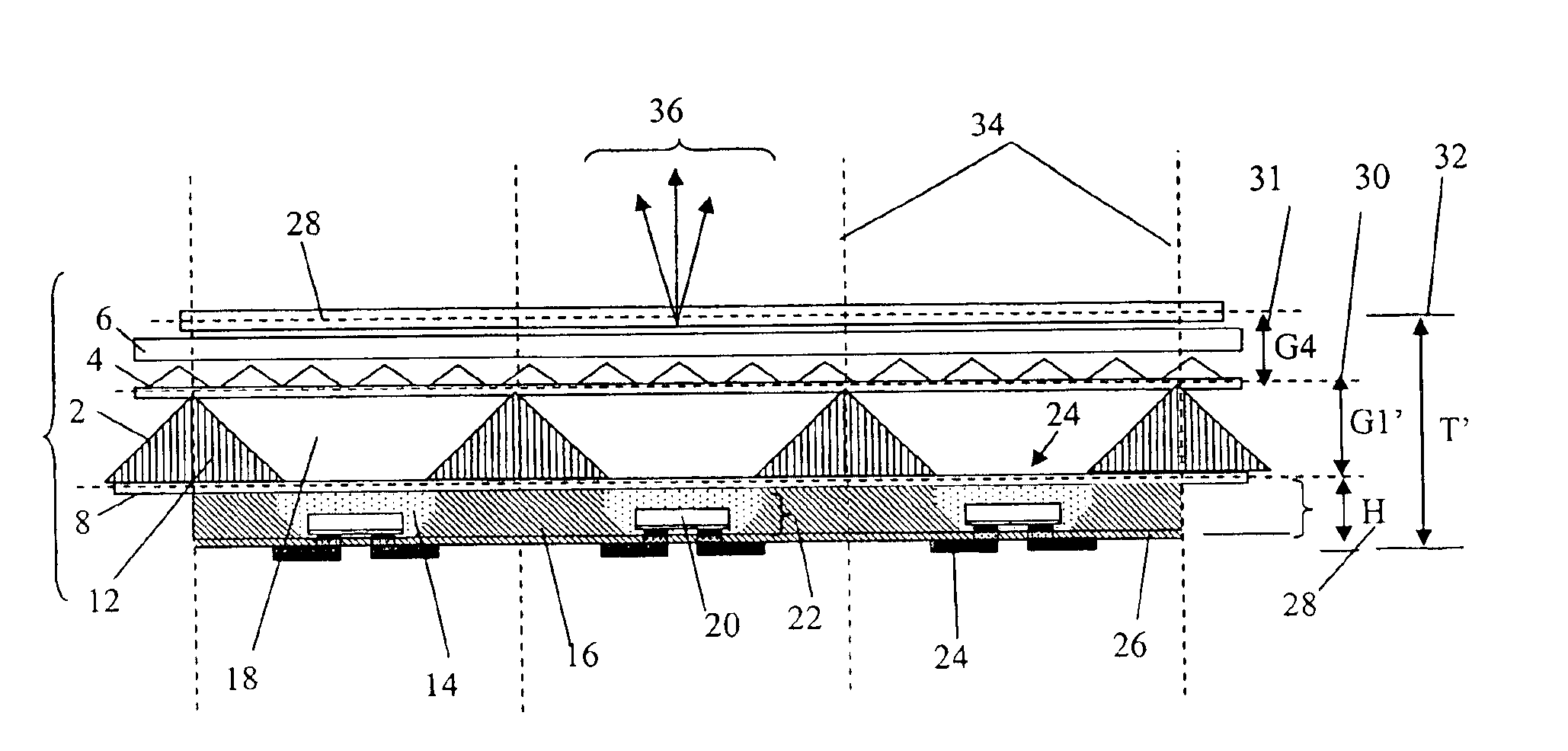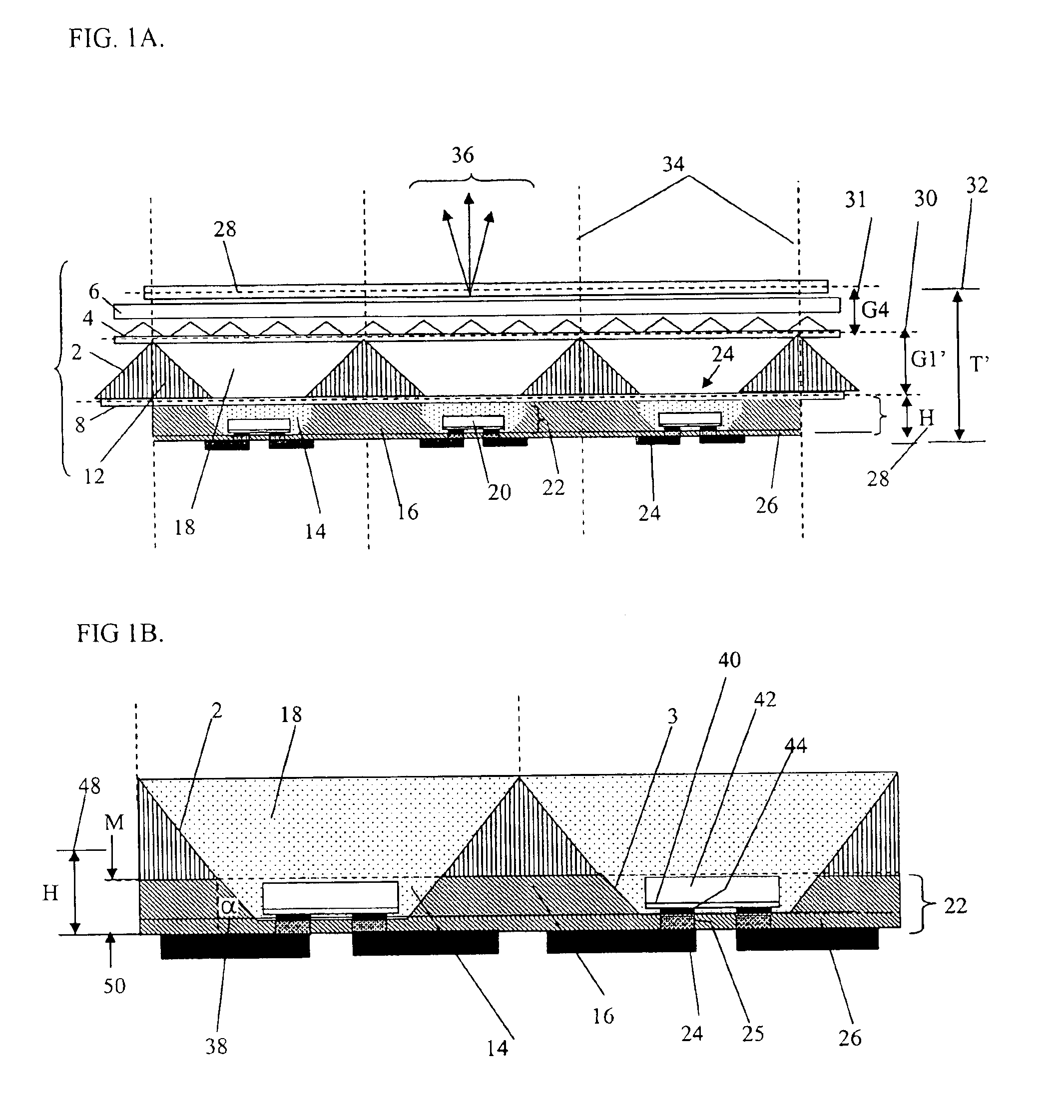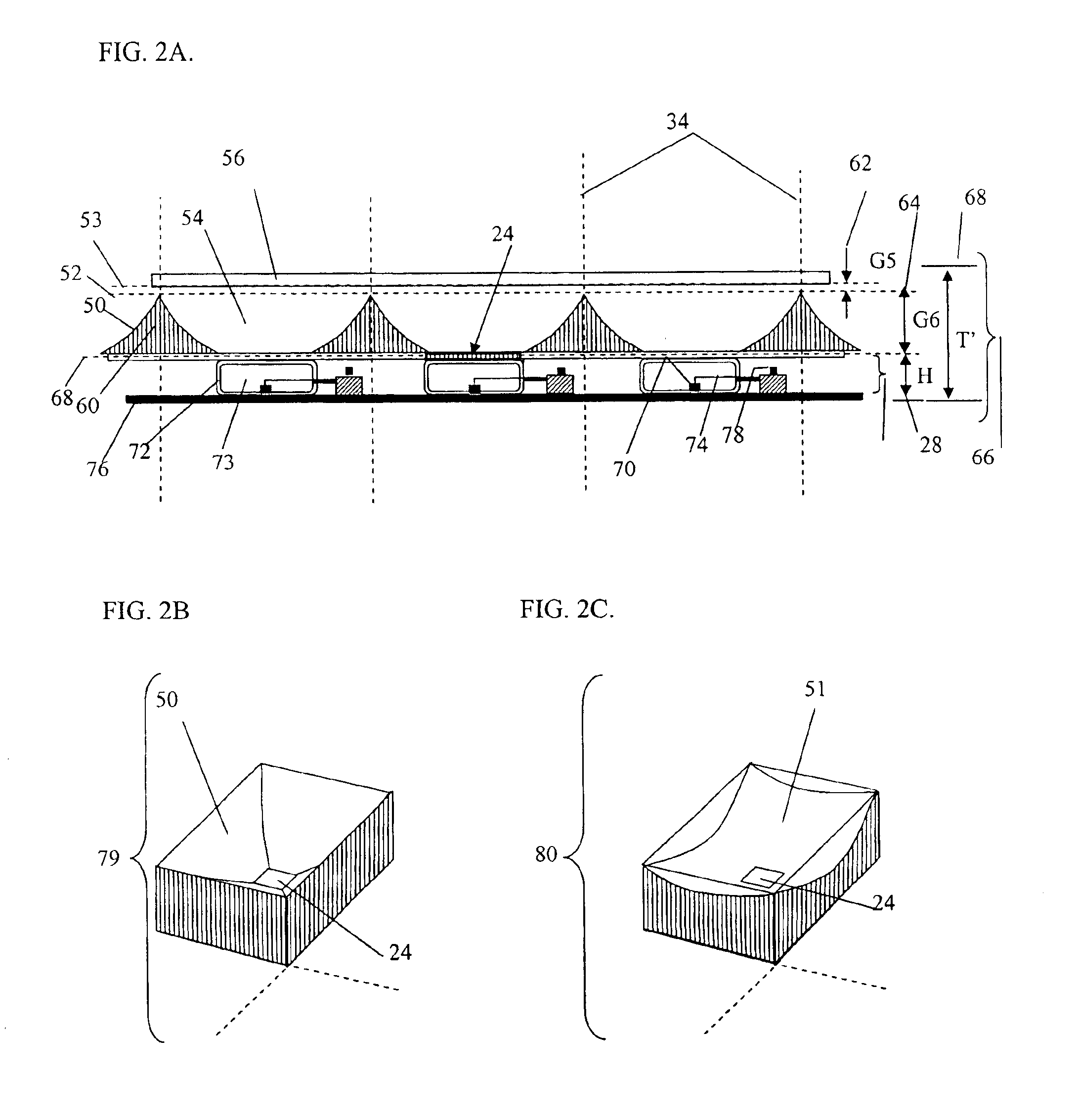High-density illumination system
a high-density, illumination system technology, applied in the direction of lighting and heating apparatus, semiconductor devices of light sources, instruments, etc., can solve the problems of inconvenient use, insufficient illumination, and insufficient illumination, and achieve the effect of maintenance, and reducing the cost of operation
- Summary
- Abstract
- Description
- Claims
- Application Information
AI Technical Summary
Benefits of technology
Problems solved by technology
Method used
Image
Examples
Embodiment Construction
The present inventions relate to multi-layered packaging structures whose structural details maximize optical output from arrays of interconnected light emitting diodes (LEDs) over earlier multi-layered packaging structures. Specifically, the present inventions allow for the highest possible concentrations of output lumens per square millimeter of output aperture. This improvement leads to designs that allow earliest possible use of LED arrays as practical replacements for light bulbs in demanding applications such as video projection. This improvement also leads to related designs that use the minimum number of LEDs for the intended purpose.
Previous inventions, such as 10 in FIGS. 1A-B and 66 in FIG. 2A, have described the use of specially-shaped and sized reflecting bins surrounding each LED (or groups of LEDs) in the array with the bins arranged to work in conjunction with the design of certain reflective multi-layers placed just above them, such as for example prism sheets 4 and...
PUM
| Property | Measurement | Unit |
|---|---|---|
| depth | aaaaa | aaaaa |
| depth | aaaaa | aaaaa |
| depth | aaaaa | aaaaa |
Abstract
Description
Claims
Application Information
 Login to View More
Login to View More - R&D
- Intellectual Property
- Life Sciences
- Materials
- Tech Scout
- Unparalleled Data Quality
- Higher Quality Content
- 60% Fewer Hallucinations
Browse by: Latest US Patents, China's latest patents, Technical Efficacy Thesaurus, Application Domain, Technology Topic, Popular Technical Reports.
© 2025 PatSnap. All rights reserved.Legal|Privacy policy|Modern Slavery Act Transparency Statement|Sitemap|About US| Contact US: help@patsnap.com



